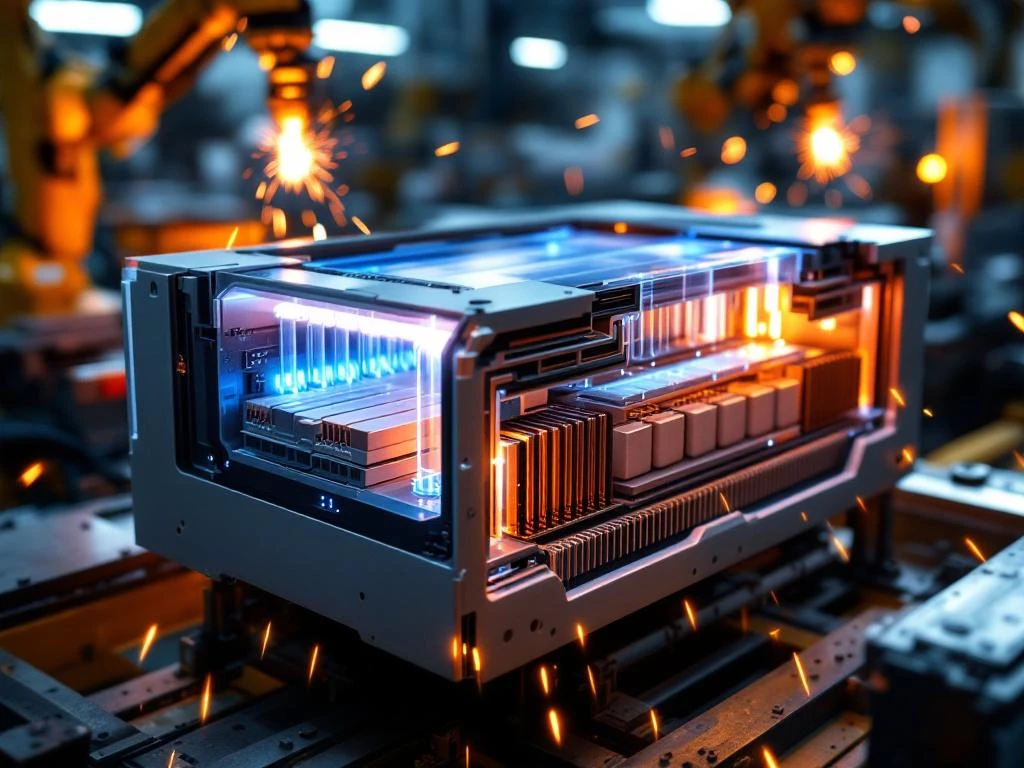The primary difference between air-cooled and liquid-cooled battery safety lies in their thermal management capabilities and risk profiles. Air-cooled systems rely on forced air circulation for temperature control, making them lighter but less efficient at heat dissipation. Liquid-cooled systems use coolant circulation for superior thermal management and enhanced safety features, though they introduce additional complexity and potential leak risks.
Understanding battery cooling safety fundamentals
Battery thermal management serves as the cornerstone of energy storage safety, preventing dangerous temperature rises that can lead to thermal runaway. Without proper cooling systems, battery cells can overheat during charging, discharging, or high-power operations, potentially causing fires or explosions.
Effective battery cooling systems maintain optimal operating temperatures, typically between 15-35°C, ensuring consistent performance and extending battery life. They also provide crucial safety monitoring through temperature sensors that can trigger protective shutdowns when temperatures exceed safe thresholds.
The choice between air-cooled and liquid-cooled approaches fundamentally shapes the safety profile of any modular energy storage system. Each method offers distinct advantages and challenges that must be carefully considered based on application requirements and operating conditions.
What is the difference between air-cooled and liquid-cooled battery safety?
Air-cooled battery safety focuses on simplicity and weight reduction, whilst liquid-cooled systems prioritise maximum thermal control and heat dissipation efficiency. The fundamental difference lies in their heat transfer capabilities and complexity levels.
Air-cooled systems use fans and ventilation to circulate air around battery cells, providing basic thermal management suitable for lower-power applications. They offer fewer potential failure points but may struggle with hotspot formation in high-density battery packs.
Liquid-cooled systems employ coolant circulation through dedicated channels or cold plates, delivering superior heat removal capacity. This approach enables better temperature uniformity across the battery pack and more precise thermal control, essential for high-performance applications like racing vehicles.
| Safety Aspect | Air-Cooled | Liquid-Cooled |
|---|---|---|
| Heat Dissipation | Moderate efficiency | High efficiency |
| Temperature Control | Basic regulation | Precise control |
| System Complexity | Simple design | Complex system |
| Failure Modes | Fan failure, dust accumulation | Coolant leaks, pump failure |
How does air-cooled battery safety work in practice?
Air-cooled battery safety operates through forced air circulation combined with temperature monitoring systems that maintain safe operating conditions. Fans draw cool air across battery cells whilst extracting heated air, creating continuous airflow that prevents dangerous temperature buildup.
The system relies on strategically placed temperature sensors throughout the battery pack to monitor thermal conditions. When temperatures approach predetermined thresholds, the cooling fans increase speed or trigger protective measures such as reduced charging rates or system shutdown.
Thermal runaway prevention in air-cooled systems depends on adequate airflow design and proper cell spacing. Battery modules must be arranged to ensure even air distribution, preventing isolated hotspots that could initiate thermal events.
For compact mobility applications, air-cooled systems offer the advantage of lightweight construction and reduced complexity. However, they require careful attention to air filtration and dust prevention to maintain cooling efficiency over time.
Why do liquid-cooled systems offer enhanced safety features?
Liquid-cooled systems provide superior safety through enhanced heat dissipation capacity and precise temperature control that air-cooling cannot match. The higher thermal conductivity of coolants enables rapid heat removal from battery cells, preventing dangerous temperature spikes.
These systems excel at maintaining uniform temperatures across large battery packs, eliminating the thermal gradients that can stress cells and lead to premature failure. Custom battery systems benefit particularly from liquid cooling’s ability to handle high power densities safely.
Advanced liquid cooling systems incorporate sophisticated monitoring capabilities, including coolant temperature sensors, flow rate monitoring, and leak detection systems. This comprehensive monitoring enables proactive safety responses before critical conditions develop. When implementing such systems, understanding the complete range of liquid cooling safety considerations becomes essential for optimal performance and risk mitigation.
The thermal mass of coolant provides additional safety buffering, absorbing heat spikes that might overwhelm air-cooled systems. This characteristic proves invaluable in high-performance applications where sudden power demands create rapid temperature changes.
What are the safety risks of each cooling method?
Both cooling methods present distinct safety challenges that require careful design consideration and ongoing maintenance to mitigate effectively.
Air-cooled safety risks include fan failure leading to inadequate cooling, dust accumulation reducing airflow efficiency, and potential thermal hotspots in poorly ventilated areas. These systems also face challenges in extreme ambient temperatures where cooling effectiveness diminishes significantly.
Liquid-cooled systems introduce coolant leakage risks that could damage electrical components or create safety hazards. Pump failures can eliminate cooling circulation, whilst coolant degradation over time may reduce thermal performance and require system maintenance.
Corrosion within liquid cooling systems poses long-term risks, potentially causing blockages or component failures. Additionally, the increased system complexity creates more potential failure points that require monitoring and maintenance.
Both systems require robust temperature monitoring and fail-safe mechanisms to ensure safe operation when primary cooling methods encounter problems.
How do you choose the safest cooling system for your application?
Selecting the appropriate cooling system requires evaluating power requirements, operating environment, safety standards, and maintenance capabilities. High-power applications typically necessitate liquid cooling, whilst compact, weight-sensitive applications may favour air cooling.
Consider the operating temperature range and ambient conditions your battery pack cooling system will encounter. Liquid cooling performs consistently across wider temperature ranges, making it suitable for extreme conditions or high-performance applications.
Evaluate your maintenance capabilities and access requirements. Air-cooled systems generally require less specialised maintenance but need regular cleaning and fan replacement. Liquid systems demand coolant monitoring and potential leak repairs.
Safety certification requirements may influence your choice, as some applications mandate specific cooling approaches or redundancy levels. Racing applications, for instance, often require the superior thermal management that liquid cooling provides.
Key safety considerations for custom battery cooling solutions
Custom cooling solutions must prioritise battery thermal management whilst addressing specific application constraints and safety requirements. Proper thermal modelling during design phases ensures adequate cooling capacity under all operating conditions.
Integration of multiple safety layers, including temperature monitoring, automatic shutdown systems, and emergency cooling protocols, provides comprehensive protection against thermal events. These systems should operate independently to maintain safety even during primary system failures.
Material selection plays a crucial role in cooling system safety, requiring components that withstand thermal cycling, vibration, and environmental conditions without degrading performance or creating hazards.
Regular testing and validation of cooling performance ensures continued safety throughout the battery system’s operational life. This includes thermal imaging assessments, coolant analysis, and airflow verification depending on the chosen cooling approach.
When developing battery cooling systems for demanding applications, working with experienced engineers ensures optimal safety and performance integration. For comprehensive guidance on liquid cooling safety implementation and best practices, understanding these specific considerations becomes crucial for successful system deployment. If you’re considering custom battery thermal management solutions for your specific requirements, we invite you to contact our team to discuss how we can help achieve your safety and performance objectives.


